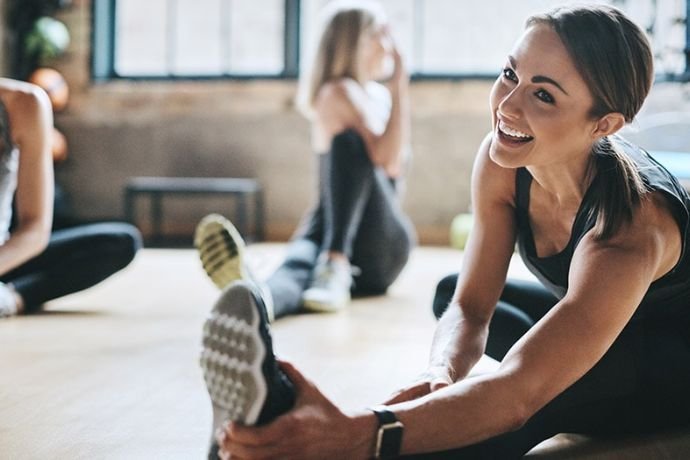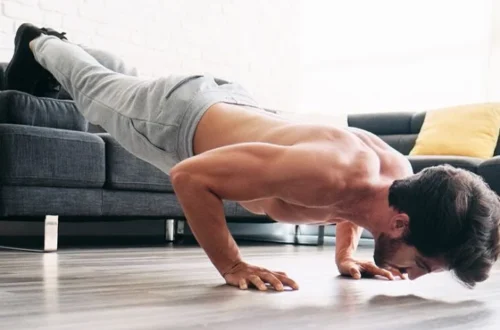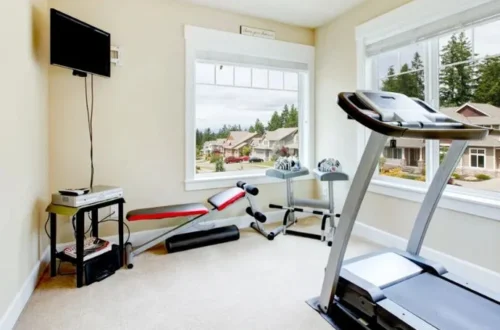I couldn’t touch my toes thirty days ago. It hurt to sit crosswise on the floor, and every morning when I got out of bed, I creaked and groaned like I was twice my age. I was the one who didn’t go to yoga class and joked about being “naturally inflexible.”
But something clicked when I realized that my tight muscles were not only painful, but also inhibiting me from doing what I wanted to do. My lack of flexibility was keeping me from doing things like playing with my kids, hiking without back pain, or just feeling good in my own skin.
At that point, I decided to do 30 days of focused flexibility training. Everyone, even me, was astonished by what happened next. I not only touched my toes (and went much beyond), but I also learned that getting more flexible changed the way I move and feel about my body.
This post will help you if you are sick of feeling stiff, achy, or constrained by tight muscles. I’ll tell you exactly what I did, what I did wrong, and the basic things that worked in just one month.
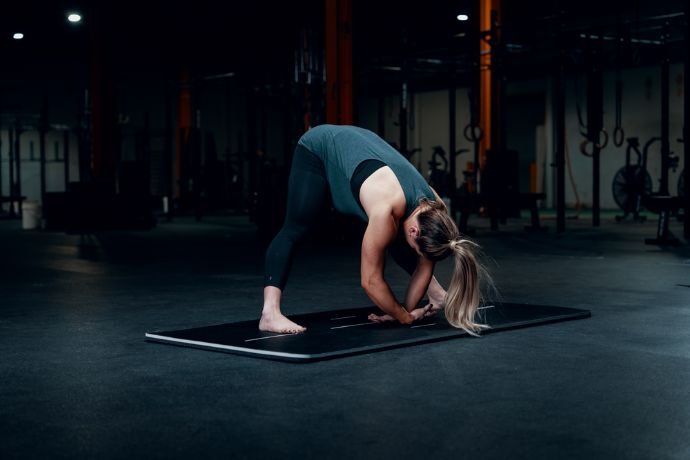
Why I Finally Committed to Flexibility Training
For a long time, I thought of flexibility as an extra thing to do instead of “real” exercise. I was focused on strength, cardio, and burning calories. Stretching seemed like a waste of time that could be better spent on harder workouts.
This way of thinking altered when I went hiking over the weekend. On the second day, my hip flexors were so stiff that I could hardly lift my legs to get over boulders. My lower back hurt all the time, and what should have been a fun trip turned into a way to deal with pain.
The Wake-Up Call
The true wake-up call happened when I was resting after the hike. Putting on stockings or getting in and out of my car became hard things to do. I understood that all the weightlifting I did was useless if I couldn’t move freely through basic ranges of motion.
Research backs up what I saw with my own eyes. Research indicates that inadequate flexibility leads to:
- Back pain (affecting 80% of adults at some stage)
- Higher chance of being hurt while exercising
- Less good at sports
- Poor posture and muscle imbalances
- As we get older, our quality of life goes down.
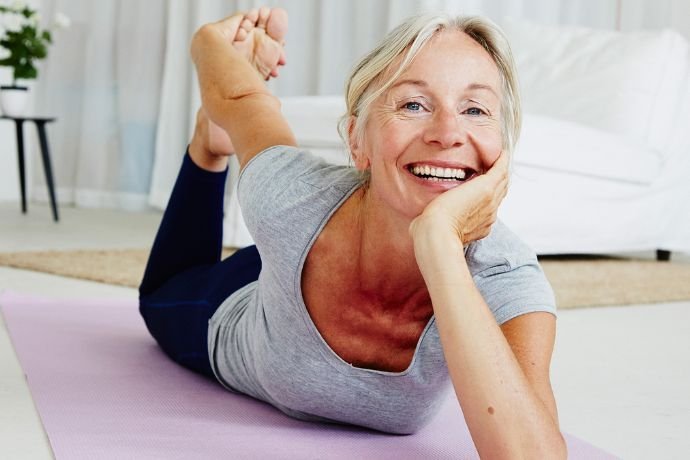
Setting My 30-Day Challenge
I decided to take flexibility training as seriously as I had taken gaining strength or losing weight. This meant:
- Every day, you have to do stretching exercises.
- Keeping track of development in a fair way
- Following a set pattern instead of doing random stretches
- Putting consistency ahead of intensity
The goal wasn’t simply to touch my toes; it was to move freely, feel good in my body, and avoid discomfort and limitations in the future.
My Starting Point: Flexibility Assessment
Before I started any flexibility exercises, I needed to know what I could and couldn’t do. I ran some easy tests to evaluate how flexible I was at first:
The Sit-and-Reach Test
When I sat on the floor with my legs splayed out, I could barely touch my ankles. My fingers were about six inches away from my toes, which is a clear sign that my hamstrings and lower back muscles are tight.
Shoulder Flexibility
I reached one arm over my shoulder and the other behind my back, and my hands were about four inches apart. This demonstrated that the thoracic spine needs to be able to move more freely, and the shoulders need to be less rigid.
Hip Flexor Assessment
I couldn’t keep my rear leg straight or my torso straight while I was in a lunge. Years of sitting had made my hip flexors quite tight.
Overhead Reach
I couldn’t lift my arms over my head while standing against a wall and keeping my back flat against it. This showed that my shoulders weren’t very flexible and my chest muscles were tight.
These tests were hard to take, but they were important. They told me what areas to focus on and what targets I could reach.
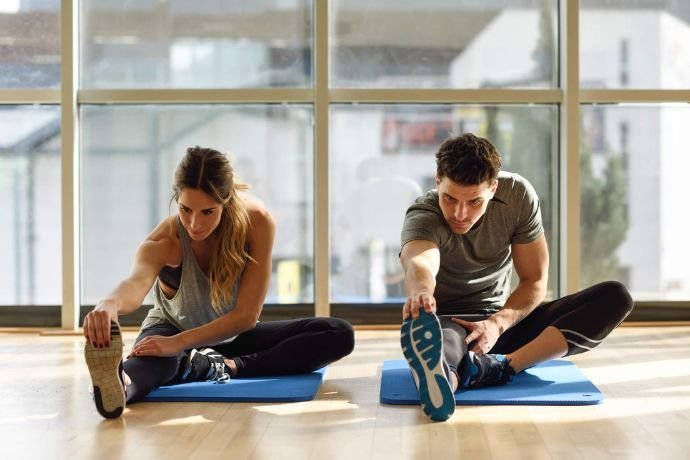
Week 1: Building the Foundation
The first week of flexibility training was all about getting used to it and learning the right way to do it. I kept the sessions brief (15–20 minutes) so I could get used to them without feeling overwhelmed.
My Daily Routine
Morning (10 minutes):
- Do 10 gentle repetitions of the cat-cow stretch.
- Child’s stance for 60 seconds
- 30 seconds of standing front fold
- Roll your shoulders and make circles with your arms for one minute in each direction.
Evening (15 minutes):
- Hip flexor stretch: 60 seconds each leg
- Hamstring stretch: 60 seconds each leg
- Seated spinal twist: 45 seconds each direction
- Figure-four stretch: 60 seconds each leg
- Deep breathing in each stretch
Key Learnings from Week 1
It was more important to be consistent than intense. Some days I felt tighter than others, but going every day was making it a habit.
It was really important to breathe. When I breathed deeply and slowly, it helped me relax into stretches and go deeper than when I held my breath or inhaled shallowly.
Progress wasn’t straight. Some days I was more flexible than others. I realized that this was typical and that I shouldn’t let small problems get me down.
Being gentle was preferable to being rough. I used to push hard into stretches, but I received better results with slow, careful pressure.
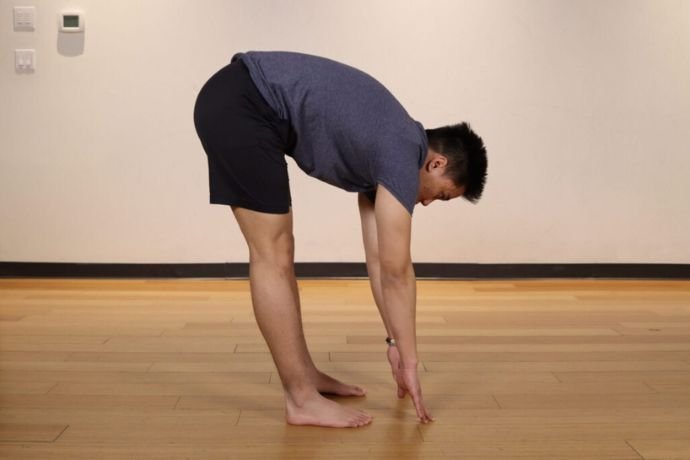
Week 2: Adding Intensity and Focus
By the end of the second week, my body was becoming used to the regular stretching. I increased the sessions longer, to 25–30 minutes and added more difficult positions.
Enhanced Routine
Morning Dynamic Warm-up (12 minutes):
- 15 swings of each leg
- 15 circles with your arms forward and back
- 10 revolutions of the hips in each direction
- 10 lunges with a twist on each side
- Eight times of inchworms
Evening Deep Stretching (20 minutes):
- Pigeon pose: 2 minutes on each side
- Seated forward fold: three minutes, with the depth getting deeper as you go.
- Twist your spine while lying on your back for 90 seconds on each side.
- Pose for happy baby: 2 minutes
- Five minutes of legs up the wall
Week 2 Breakthroughs
Increased range of motion: I could reach my toes 2 inches closer in the sit-and-reach test.
Better sleep quality: The nighttime stretching routine helped me fall asleep sooner and wake up feeling less sore.
Reduced daily stiffness: Getting out of bed was easier, and I felt less tightness throughout the day.
Mental benefits: The deep breathing and focus required for flexibility exercise became a form of meditation that helped him relax.
Week 3: Advanced Techniques and Problem-Solving
I learned more sophisticated stretching exercises in the third week and how to focus on the parts that were bothering me the most.
Advanced Flexibility Techniques
PNF Stretching (Proprioceptive Neuromuscular Facilitation):
This process includes contracting the muscle, stretching it, releasing it, and then stretching it again.
- Stretch until you feel some tightness.
- Keep the muscle tight for five to seven seconds.
- Take it easy and stretch more for 15 to 30 seconds.
- Do it again 2–3 times.
Dynamic Stretching:
Moving through different ranges of motion instead of staying in one place:
- Leg swings to help your hips move better
- Arm circles to make your shoulders more flexible
- Torso twists to help the spine move
- Controlled rotations of the joints for all main joints
Targeting Problem Areas
Hip Flexors (My biggest challenge):
- Low lunge with the back knee down for two minutes on each side
- Couch stretch (foot raised behind): 90 seconds on each side
- Stretch your hip flexors while standing for one minute on each side.
- Butterfly pose for 3 minutes with forward fold
Hamstrings:
- Standing forward fold with knees bent, then slowly straightening them
- Stretching one leg’s hamstrings using a strap
- Stretch your hip flexors while standing for one minute on each side.
- You need to do the Supine hamstring stretch with a towel.
Week 3 Results
Measurable progress: I could now touch my toes, which was a big step forward! Not in a nice way, but my fingertips touched.
Improved posture: People at work said I looked taller and more sure of myself.
Exercise performance: My squats got deeper, and my running stride felt better.
Daily comfort: I could sit for longer periods of time, and I naturally started to move around more during the day.
Week 4: Integration and Lifestyle Changes
Last week was all about adding mobility improvement routines to my daily life and dealing with the habits that made me feel tight.
Lifestyle Modifications
Workspace Setup:
- Standing desk for a portion of the day
- Take a break to stretch every hour.
- Improvements to ergonomics to lessen strain
Sleep Position:
- Put a pillow between your knees while side sleeping
- Light stretches before bed and when you wake up
- Checking the mattress to make sure it supports the spine correctly
Activity Integration:
- When you can, have meetings while walking.
- Using steps instead of elevators
- Parking farther away to get more exercise
Comprehensive Daily Routine
Upon waking (8 minutes):
- 30 seconds of knees to chest
- Spine twist for 30 minutes
- Cat-cow for 1 minute
- Standing forward fold for 1 minute
- Hip circles for 1 minute each direction
- Shoulder rolls for 1 minute
Midday Break (5 minutes):
- Stretches you may do at your desk that focus on regions that are tight while you work
- Rolls for the neck and squeezes for the shoulder blades
- Twist your spine when sitting
- Stretch the hip flexors while standing
Pre-Workout (10 minutes):
- Dynamic warm-up based on planned activities
- Sequence for joint motion
- Getting ready to move
Post-Workout (10 minutes):
- Static stretches that operate on muscles that have been worked
- Breathing to cool down
- Keep your range of motion in mind.
Evening Wind-Down (15 minutes):
- Poses for restorative yoga
- Deep breath exercises
- Gentle exercises to let go of stress every day
The 30-Day Results
The effects after 30 days of consistent flexibility training were better than I had hoped:
Measurable Improvements
Sit-and-Reach Test: The Sit-and-Reach Test showed that I could reach 9 inches farther than before, from 6 inches short of my toes to 3 inches past them.
Shoulder Mobility: In the behind-the-back reach test, my hands now overlapped by 1 inch.
Hip Flexor Length: In the behind-the-back reach test, my hands now overlapped by 1 inch.
Overhead Reach: I could reach over my head with my arms while still touching the wall.
Functional Improvements
Daily Activities:
- Putting on socks and shoes became effortless
- Getting in and out of cars felt natural
- Bending down to pick things up required no mental preparation
Exercise Performance:
- Squat depth increased by 3 inches
- Running stride felt longer and more efficient
- Impossible yoga poses became accessible
Pain Reduction:
- Lower back pain virtually disappeared
- Neck tension from desk work decreased significantly
- Overall, muscle soreness lasted shorter periods
Unexpected Benefits
Sleep Quality: Fell asleep 15 to 20 minutes faster and felt more rested when I woke up.
Stress Management: The daily stretching regimen turned into a kind of meditation that made my mind clearer.
Body Awareness: Became more aware of how I stand and move during the day.
Confidence: Being comfortable and confident in my physique made me feel better about myself and more inclined to attempt new things.
The Science Behind Rapid Flexibility Gains
Knowing why stretching exercises work so quickly helped me improve my method and stay motivated:
Neurological Adaptations
Neurological improvements, not physical lengthening of muscles, are what make flexibility improve the fastest.
Stretch Tolerance: Within days, your neural system gets used to longer muscle lengths, which lets you stretch deeper.
Reciprocal Inhibition: When you stretch one muscle group, the muscles that are opposite to it naturally relax, which makes the range of motion bigger.
Autogenic Inhibition: When you stretch for a long time, your body activates defensive responses that make your muscles relax and stretch.
Tissue Changes
When you work out regularly, your muscles and connective tissue alter in the following ways:
Increased Muscle Length: When you stretch regularly, your muscles add sarcomeres (contractile units), which makes them longer for good.
Fascial Adaptation: Regular stress makes the connective tissue around muscles more flexible.
Improved Blood Flow: Better circulation helps tissues get nutrients and get rid of waste materials more quickly.
Hydration and Mobility
Proper hydration helps enhance mobility by:
- Keeping the tissue flexible
- Lessening the friction between muscle layers
- Helping the body make synovial fluid for healthy joints
- Improving the movement of nutrients to strained tissues
Essential Stretching Exercises for Beginners
From what I’ve seen, these basic stretching exercises provide you the most bang for your buck:
Lower Body Stretches
1. Hip Flexor Stretch
Why it matters: Counteracts hours of sitting
How to do it: Low lunge position, sink hips forward, hold 60-90 seconds each side
Progression: Elevate the back foot on the couch or chair
2. Hamstring Stretch
Why it matters: Essential for bending and good posture
How to do it: Seated with one leg extended, reach toward toes, hold 60 seconds each side
Progression: Use a strap or towel for assistance, try standing variations
3. Pigeon Pose
Why it matters: Opens hips and glutes comprehensively
How to do it: From hands and knees, bring one knee forward and extend the opposite leg back
Progression: Lean forward over the front leg for a deeper stretch
Upper Body Stretches
1. Doorway Chest Stretch
Why it matters: Counters rounded shoulder posture
How to do it: Place your forearm on the doorframe, step through to stretch your chest
Progression: Vary arm height to target different muscle fibers
2. Cross-Body Shoulder Stretch
Why it matters: Maintains shoulder joint mobility
How to do it: Pull one arm across the body with the opposite hand
Progression: Add gentle downward pressure
3. Neck Side Bend
Why it matters: Releases tension from desk work
How to do it: Tilt head to one side while the opposite hand reaches toward the floor
Progression: Add resistance by gently pulling with the hand
Full-Body Stretches
1. Cat-Cow Stretch
Why it matters: Mobilizes the entire spine
How to do it: On hands and knees, alternate between arching and rounding the spine
Progression: Add hip circles and side bends
2. Child’s Pose
Why it matters: Restores spine and calms the nervous system
How to do it: Kneel with big toes touching, sink hips back toward heels, extend arms forward
Progression: Walk hands to one side to target different areas
Common Flexibility Training Mistakes
Learning from my errors and research, here are the most common flexibility training mistakes to avoid:
Mistake 1: Stretching Cold Muscles
The Problem: Stretching without warming up increases injury risk and limits effectiveness.
The Solution: Always do 5-10 minutes of light movement before static stretching. Save intense stretches for after workouts when muscles are warm.
Mistake 2: Bouncing or Forcing Stretches
The Problem: Ballistic stretching can trigger protective reflexes that actually increase muscle tension.
The Solution: Use slow, controlled movements and hold stretches at the point of mild tension, not pain.
Mistake 3: Holding Your Breath
The Problem: Breath-holding increases muscle tension and limits the relaxation response.
The Solution: Focus on deep, slow breathing throughout each stretch. Use exhales to gently deepen positions.
Mistake 4: Inconsistent Practice
The Problem: Sporadic stretching produces minimal results and doesn’t build lasting improvements.
The Solution: Even 10 minutes daily beats one one-hour-long session weekly. Consistency is key for neurological adaptations.
Mistake 5: Ignoring Bilateral Balance
The Problem: Only stretching tight areas while ignoring imbalances between the left and right sides.
The Solution: Assess and address both sides equally, even if one side feels tighter or weaker.
Mistake 6: Expecting Immediate Dramatic Results
The Problem: Unrealistic expectations lead to frustration and quitting.
The Solution: Celebrate small improvements and trust the process. Significant changes typically occur over weeks, not days.
Creating Your 30-Day Flexibility Plan
Ready to start your own flexibility training journey? Here’s your step-by-step plan:
Week 1: Foundation Building
Goal: Establish a daily habit and assess baseline flexibility
Daily Commitment: 15-20 minutes
Focus: Basic stretches for major muscle groups
Key Principle: Consistency over intensity
Sample Routine:
- 5-minute gentle warm-up
- 10-minute full-body stretch sequence
- Focus on breathing and proper form
Week 2: Routine Enhancement
Goal: Increase session length and add targeted stretches
Daily Commitment: 25-30 minutes
Focus: Address personal problem areas identified in week 1
Key Principle: Listen to your body and avoid forcing
Additions:
- Longer hold times (60-90 seconds)
- Additional stretches for tight areas
- Introduction of props (straps, blocks, pillows)
Week 3: Advanced Techniques
Goal: Implement PNF stretching and dynamic movements
Daily Commitment: 30-35 minutes
Focus: More sophisticated stretching methods
Key Principle: Quality movement patterns
New Elements:
- PNF stretching for stubborn areas
- Dynamic stretching sequences
- Combination movements that address multiple muscle groups
Week 4: Integration and Lifestyle
Goal: Incorporate mobility improvement throughout the day
Daily Commitment: Multiple short sessions (total 35-40 minutes)
Focus: Making flexibility part of your lifestyle
Key Principle: Movement as medicine
Lifestyle Integration:
- Morning movement ritual
- Workday stretch breaks
- Pre/post-workout routines
- Evening relaxation sequence
Measuring Your Progress
Track your flexibility training journey with these simple assessments:
Weekly Measurements
Quantitative Tests:
- Sit-and-reach distance
- Overhead reach (wall test)
- Behind-the-back hand reach
- Hip flexor lunge depth
Qualitative Assessments:
- Daily stiffness levels (1-10 scale)
- Exercise performance improvements
- Sleep quality changes
- Overall comfort in daily activities
Progress Photos
Take photos in standard stretching positions:
- Side view of forward fold
- Overhead reach against the wall
- Lunge position showing hip flexor length
- Seated twist showing spinal rotation
Functional Improvements
Notice changes in:
- Ease of putting on socks and shoes
- Getting in and out of cars
- Bending down to pick up objects
- Sitting comfort during long meetings
- Exercise form and depth
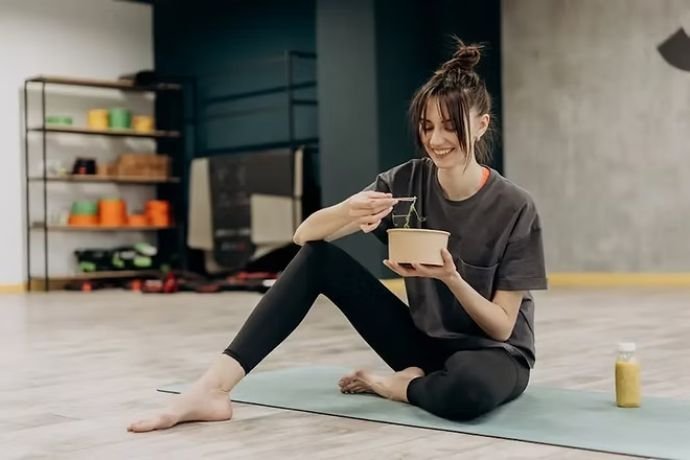
Nutrition and Hydration for Flexibility
Support your stretching exercises with proper nutrition:
Hydration for Tissue Health
Daily Water Intake: Half your body weight in ounces
Pre-Stretching: 8-16 ounces of water, 30 minutes before sessions
During Stretching: Small sips if sessions exceed 30 minutes
Post-Stretching: Continue hydrating throughout the day
Anti-Inflammatory Foods
Include Regularly:
- Fatty fish (salmon, mackerel, sardines)
- Leafy greens (spinach, kale, arugula)
- Berries (blueberries, cherries, strawberries)
- Nuts and seeds (walnuts, flaxseeds, chia seeds)
- Turmeric and ginger
Limit or Avoid:
- Processed foods are high in sugar
- Trans fats and excessive saturated fats
- Excessive alcohol consumption
- Foods that cause personal inflammation responses
Timing Considerations
Pre-Stretching (1-2 hours before):
- Light, easily digestible snacks
- Avoid large meals that might cause discomfort
- Herbal teas for relaxation
Post-Stretching:
- No specific nutritional requirements
- Continue regular healthy eating patterns
- Consider magnesium supplementation for muscle relaxation (consult healthcare provider)
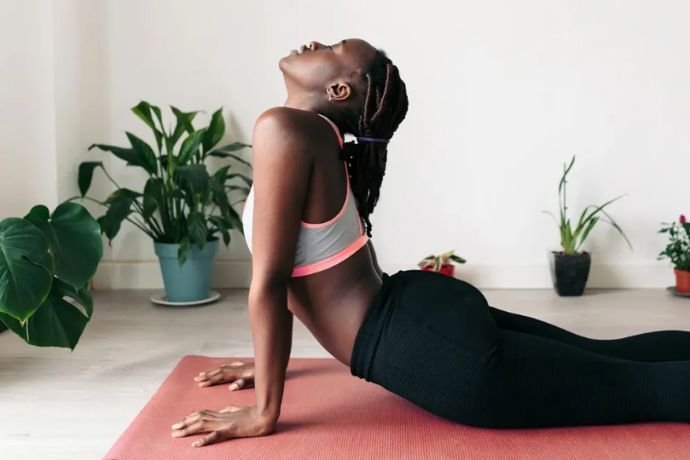
Your Flexibility Training Journey Starts Now
Thirty days ago, I was the stubborn person who made excuses about my age and heredity. I can move freely, comfortably, and with confidence today, which I didn’t think was possible. The shift wasn’t simply in my body; it also impacted how I feel about my body and what I think I can do.
It’s not about becoming a contortionist or getting poses that look good on Instagram when you do flexibility training. It’s about living life easily, avoiding suffering, and keeping your ability to do what you love for a long time.
The great thing about gaining flexibility is that everyone starts at a different level, you can see your improvement, and the benefits come immediately. You don’t need any special tools, pricey classes, or the best weather. You only need to be patient, consistent, and willing to put money into your body’s long-term health.
Ready to transform your flexibility in the next 30 days?
Here’s your immediate action plan:
- Assess your current flexibility using the simple tests I described
- Choose your daily time slots – even 15 minutes can create meaningful change
- Set up your space with a yoga mat or towel and any props you might need
- Start with basic stretches, focusing on your tightest areas
- Track your progress with photos, measurements, or simple notes about how you feel
Don’t wait for motivation to come to you; it comes after you do something. Don’t wait for the perfect schedule; the best one is the one you’ll stick to. Don’t put it off until tomorrow; your body is ready for good things to happen right now.
What’s the first stretch you’ll try today? That one choice to start is the first step on your path to better flexibility, less pain, and a better quality of life.
You will be more flexible, comfortable, and confident in just 30 days.

